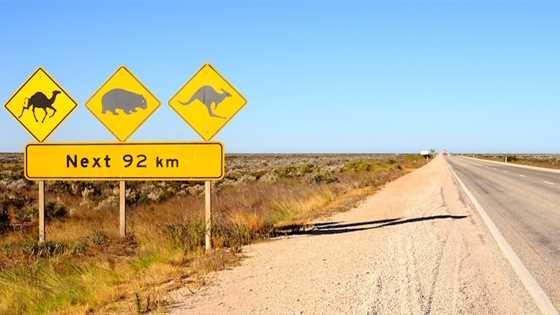The Kimberley is a unique and ancient land, an immensely spiritual place offering adventure, old-word luxury and experiences unlike anywhere else in the world. It has something for everyone, from backpacking and off-road camping to $1000 per-night boutique accommodation, heli-tours and cruises to some of the world's most remote and least visited travel destinations.
The Kimberley is a unique and ancient land, an immensely spiritual place offering adventure, old-word luxury and experiences unlike anywhere else in the world. It has something for everyone, from backpacking and off-road camping to $1000 per-night boutique accommodation, heli-tours and cruises to some of the world͛s most remote and least visited travel destinations. For most travellers, Broome is their gateway to the Kimberley. Balmy warm weather, beautiful beaches, friendly and relaxed locals and plenty of fun places to eat and drink make it a popular weekend or week-long break from winter in Perth. It has a fascinating history as a wild-west town with a difference - it was pearl shells, not gold, that caused the rush to this red dirt town on the most remote coast in the world. It is WAs original melting pot and many of the locals today are a mix of European, Japanese, Chinese and local aboriginals who have worked and lived together since the 1800s. The rest of the Kimberley is enormous, bigger than most European countries. The entire Kimberley, including the western outback and Kimberley coast, covers 423,517sqkm. It is three times the size of England and approximately the size of California. Of its 40,000 people, at least half are of Indigenous descent. You only get perspective by taking a flight and viewing the geometric matrix that makes up the rugged Kimberley plateau from above – red curtains of sedimentary sandstone atop green escarpments, before low-lying ranges that, 1.8 billion years ago, were as big as the Andes. Thirsty black rivers rest in deep groves across golden savannah plains, the residueofan ancient inland sea. A haze of peachy pink dust covers everything. In the heart of the Kimberley is a gigantic man-made lake: Lake Argyle and the olive-green Ord River feed a bed of huge orchards and a town, but for all that, Kununurra is still a small green patch on a massive red landscape. The woodland savannah seems almost alien. The ground is littered with white boulders, long-vanished mountain ranges; spinifex fronds glisten in the sun, short black gums rise from the grass and boab trees form eerie silhouettes when a vehicle has kicked up a cloud of dust. When temperatures get up into the 40s, it's an event to see a cloud in the sky. But then there are the Kimberley's famed gorges – sheltered and green, with pockets of monsoonal rainforest. In the Wet, it rains for a few hours then stops –it's never incessant. The heat and humidity is intense but the sheer drama is amazing: waterholes fill and overflow; the boabs areinleaf; spectacular thunderstorms light up the sky; and waterfalls gush from the escarpments. The climate changes each six to eight weeks as trees flower, attracting ephemeral lorikeets, honeyeaters following the blossom trail, and water birds after the rain. Plenty of birds are endemic to the Kimberley – like the startlingly cute, rare Gouldian finch. A place like this is a refuge for a diverse and fragile wildlife, from wallaroos and reptiles, to shy, short-eared rock wallabies. Packs of dingoes howl on either side of the Pentecost River by night, freshwater crocs roam the inland rivers, and salties thrive up north on the mangrove coast. Tough Brahman cattle have their own legacy, out on gigantic stations. While DIY travel is possible, tours are a great way to get a better understanding of this vast land or, at the very least, do your research and avail yourself of the advice of the locals. It's a beautiful yet vast and potentially dangerous land to be treated with respect and awe it desGetting there and around
Distance from Perth to Broome is 2239km and 3150km to Kununurra, all on sealed roads. Direct flights are available from Perth and Melbourne and some flights are available direct from overseas, but may vary with the seasons and need to be checked in advance. You can also take a direct flight to Derby and Kununurra. From there, it's all about private charters or driving.Weather
The Yarawu people identify six seasons, but in a nutshell, Broome activity is defined by the dry season (May to October) and the wet season (November to April). In the Dry, skies are blue and temperatures range from 20ºC to 30ºC, with low humidity. From mid-June to mid-August is peak season; all attractions are usually open but make sure you pre-book any tours. The wet season brings heavy, short downpours in the afternoons or evenings, and high humidity. 4WD tracks close, and many businesses scale back. But there's plenty to love, including cheaper accommodation. Watch the storms roll in from the clifftops at Gantheaume Point, and take a scenic flight or hovercraft tour to see rivers become inland seas.Places to stay
Broome has a range of accommodation from caravan and camping to 5-star luxury. Kununurra offers plentiful accommodation, including caravan parks, hotel/motels, resorts, backpackers, B&B and self-contained apartments. Most tour companies will pick you up from your accommodation. Out of town, you'll find outback camping, station stays and remote coastal safari camps. Halls Creek is the ideal place to set up camp and explore the East Kimberley landscape, including the Purnululu National Park, the Wolfe Creek Crater, and the China Wall.Image credit: Windjana Gorge - Tourism WA







